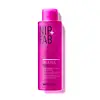What's inside
What's inside
 Key Ingredients
Key Ingredients

 Benefits
Benefits

 Concerns
Concerns

 Ingredients Side-by-side
Ingredients Side-by-side

Water
Skin ConditioningPolysorbate 20
EmulsifyingHamamelis Virginiana Water
AstringentPEG-40 Hydrogenated Castor Oil
EmulsifyingSalicylic Acid
MaskingPropanediol
SolventAlcohol
AntimicrobialGlycerin
HumectantSodium Hydroxymethylglycinate
PreservativeAllantoin
Skin ConditioningDisodium EDTA
Panthenol
Skin ConditioningParfum
MaskingSodium Hydroxide
BufferingBenzyl Salicylate
PerfumingSodium Hyaluronate
HumectantNelumbo Nucifera Flower Extract
Skin ConditioningNymphaea Coerulea Flower Extract
Skin ConditioningWater, Polysorbate 20, Hamamelis Virginiana Water, PEG-40 Hydrogenated Castor Oil, Salicylic Acid, Propanediol, Alcohol, Glycerin, Sodium Hydroxymethylglycinate, Allantoin, Disodium EDTA, Panthenol, Parfum, Sodium Hydroxide, Benzyl Salicylate, Sodium Hyaluronate, Nelumbo Nucifera Flower Extract, Nymphaea Coerulea Flower Extract
Water
Skin ConditioningPentylene Glycol
Skin ConditioningEthoxydiglycol
HumectantSalicylic Acid
MaskingGlycolic Acid
BufferingLactic Acid
BufferingCitric Acid
BufferingTartaric Acid
BufferingMalic Acid
BufferingPyrus Malus Fruit Extract
Skin ConditioningVitis Vinifera Leaf Extract
Skin ConditioningCitrus Medica Limonum Fruit Extract
Skin ConditioningVaccinium Myrtillus Fruit/Leaf Extract
AstringentSaccharum Officinarum Extract
MoisturisingPropylene Glycol
HumectantPhenethyl Alcohol
Masking1,2-Hexanediol
Skin ConditioningTasmannia Lanceolata Fruit/Leaf Extract
AntioxidantCentella Asiatica Extract
CleansingInulin
Skin ConditioningFructose
HumectantSodium Hyaluronate Crosspolymer
HumectantSodium Hyaluronate
HumectantSodium Acetylated Hyaluronate
HumectantHydrolyzed Sodium Hyaluronate
Skin ConditioningPanthenol
Skin ConditioningNiacinamide
SmoothingZinc PCA
HumectantAnthemis Nobilis Flower Extract
MaskingAloe Barbadensis Leaf Juice
Skin ConditioningCurcuma Longa Root Extract
MaskingWater, Pentylene Glycol, Ethoxydiglycol, Salicylic Acid, Glycolic Acid, Lactic Acid, Citric Acid, Tartaric Acid, Malic Acid, Pyrus Malus Fruit Extract, Vitis Vinifera Leaf Extract, Citrus Medica Limonum Fruit Extract, Vaccinium Myrtillus Fruit/Leaf Extract, Saccharum Officinarum Extract, Propylene Glycol, Phenethyl Alcohol, 1,2-Hexanediol, Tasmannia Lanceolata Fruit/Leaf Extract, Centella Asiatica Extract, Inulin, Fructose, Sodium Hyaluronate Crosspolymer, Sodium Hyaluronate, Sodium Acetylated Hyaluronate, Hydrolyzed Sodium Hyaluronate, Panthenol, Niacinamide, Zinc PCA, Anthemis Nobilis Flower Extract, Aloe Barbadensis Leaf Juice, Curcuma Longa Root Extract
Ingredients Explained
These ingredients are found in both products.
Ingredients higher up in an ingredient list are typically present in a larger amount.
Panthenol is a common ingredient that helps hydrate and soothe the skin. It is found naturally in our skin and hair.
There are two forms of panthenol: D and L.
D-panthenol is also known as dexpanthenol. Most cosmetics use dexpanthenol or a mixture of D and L-panthenol.
Panthenol is famous due to its ability to go deeper into the skin's layers. Using this ingredient has numerous pros (and no cons):
Like hyaluronic acid, panthenol is a humectant. Humectants are able to bind and hold large amounts of water to keep skin hydrated.
This ingredient works well for wound healing. It works by increasing tissue in the wound and helps close open wounds.
Once oxidized, panthenol converts to pantothenic acid. Panthothenic acid is found in all living cells.
This ingredient is also referred to as pro-vitamin B5.
Learn more about PanthenolSalicylic Acid (also known as beta hydroxy acid or BHA) is a well-known ingredient for treating skin that struggles with acne and clogged pores. It exfoliates both the skin's surface and deep within the pores to help clear out buildup, control oil, and reduce inflammation.
Unlike AHAs (alpha hydroxy acids), salicylic acid is oil-soluble. This allows it to penetrate into pores which makes it especially effective for treating blackheads and preventing future breakouts.
Salicylic acid is also known for its soothing properties. It has a similar structure to aspirin and can calm inflamed or irritated skin, making it a good option for acne-prone skin that is also sensitive.
Concentrations of 0.5-2% are recognized by the U.S. FDA as an over-the-counter topical acne product.
It can cause irritation and/or dryness if one's skin already has a compromised moisture barrier, so it's best to focus on repairing that before introducing this ingredient into your routine.
While salicylic acid does not increase sun sensitivity, it’s still important to wear sunscreen daily to protect your skin.
If you are looking for the ingredient called BHA or Butylated Hydroxyanisole, click here.
Learn more about Salicylic AcidSodium Hyaluronate is hyaluronic acid's salt form. It is commonly derived from the sodium salt of hyaluronic acid.
Like hyaluronic acid, it is great at holding water and acts as a humectant. This makes it a great skin hydrating ingredient.
Sodium Hyaluronate is naturally occurring in our bodies and is mostly found in eye fluid and joints.
These are some other common types of Hyaluronic Acid:
Learn more about Sodium HyaluronateWater. It's the most common cosmetic ingredient of all. You'll usually see it at the top of ingredient lists, meaning that it makes up the largest part of the product.
So why is it so popular? Water most often acts as a solvent - this means that it helps dissolve other ingredients into the formulation.
You'll also recognize water as that liquid we all need to stay alive. If you see this, drink a glass of water. Stay hydrated!
Learn more about Water